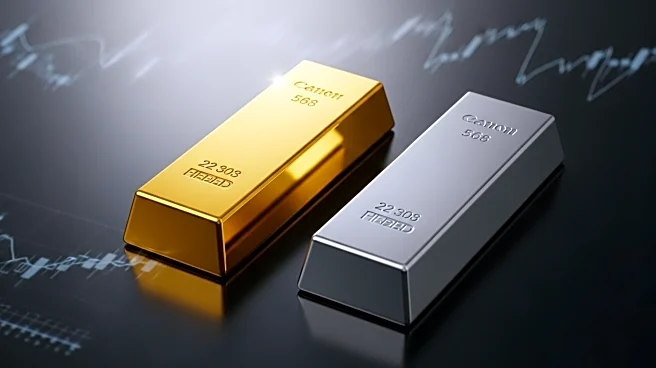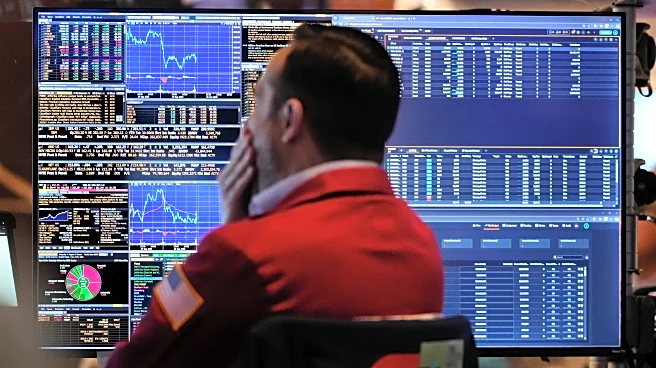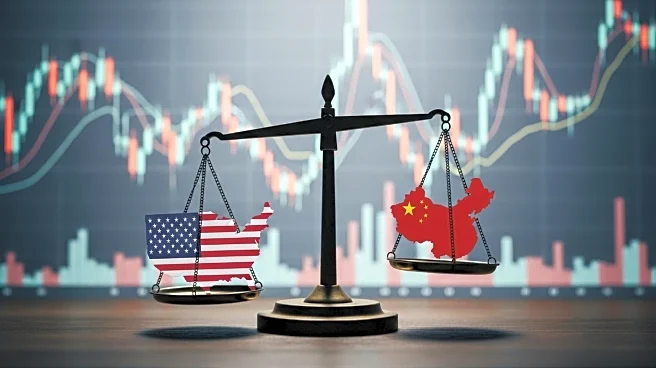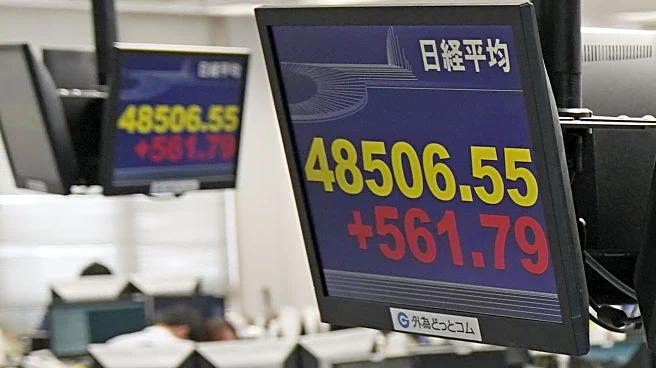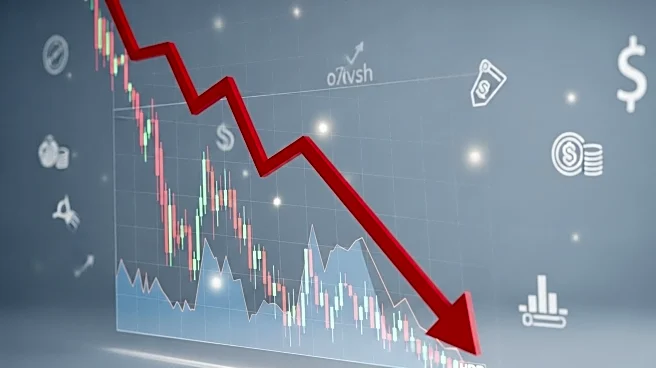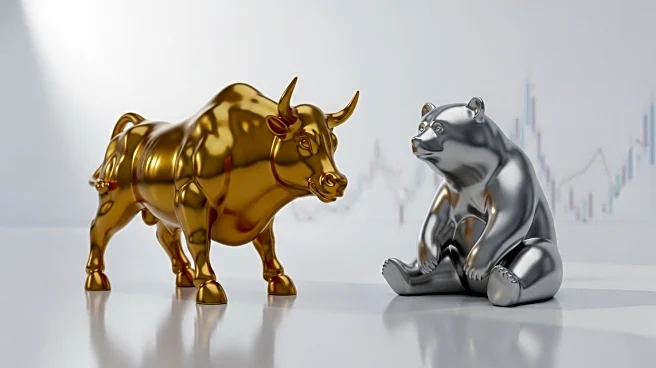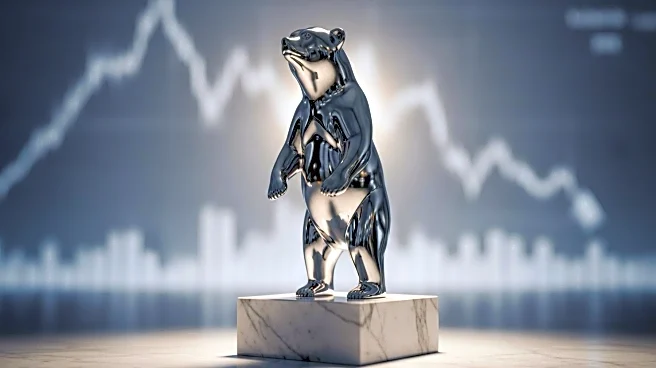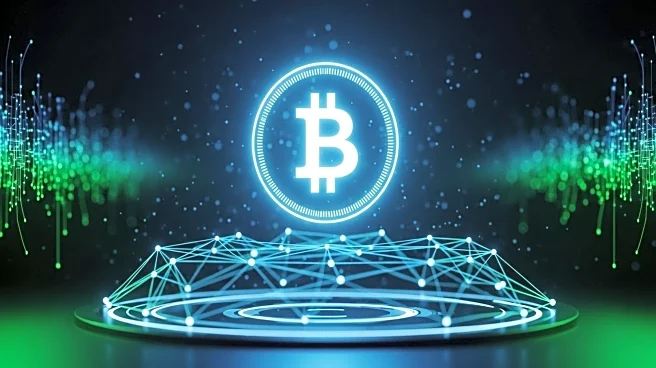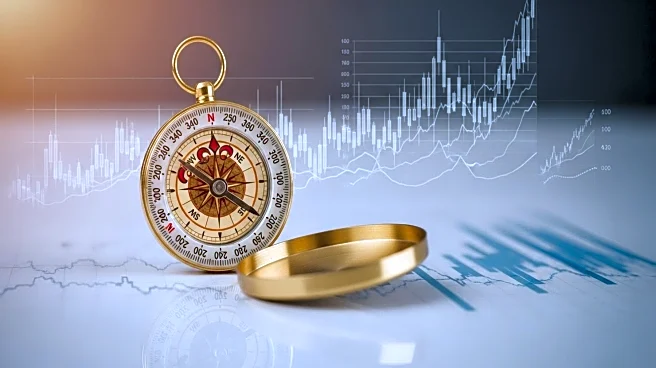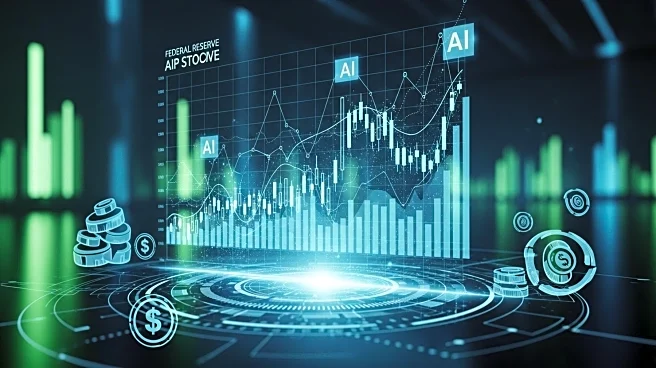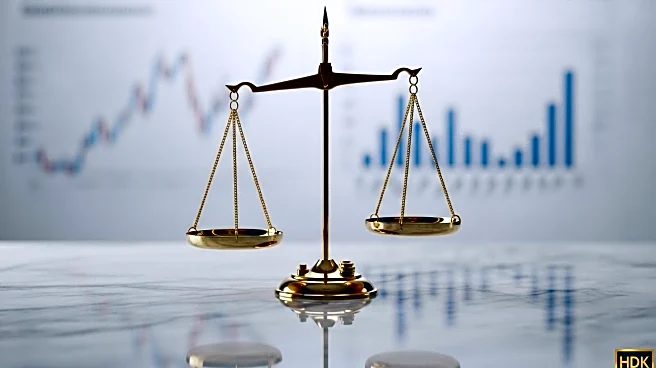What is the story about?
What's Happening?
Gold futures have experienced significant gains, rising by $44.40 to reach $4,035.50, despite a widespread selloff in other markets. The Nasdaq fell by 4.39%, the S&P 500 lost 3.41%, and Bitcoin dropped over 9% before recovering slightly. Silver also saw gains in the spot market, increasing by $0.92 to $50.12, although its futures price decreased slightly. This divergence between spot and futures prices, known as backwardation, suggests strong demand for physical silver. The market volatility is partly attributed to fears surrounding trade tariffs and ongoing trade negotiations involving President Trump.
Why It's Important?
The surge in gold and silver prices highlights investor concerns about market stability and potential economic downturns. Precious metals are traditionally seen as safe havens during times of uncertainty, and their rising prices indicate a shift in investor sentiment. The backwardation in silver suggests a strong preference for physical assets over futures contracts, reflecting concerns about future supply and demand dynamics. This trend could impact the broader commodities market and influence investment strategies, particularly in the context of ongoing trade negotiations and economic policies.
What's Next?
As gold and silver continue to break records, investors may increasingly turn to these metals as a hedge against market volatility. The ongoing trade negotiations and potential tariffs could further influence precious metal prices, depending on their outcomes. Market participants will likely monitor these developments closely, adjusting their strategies based on geopolitical and economic shifts. Additionally, the persistent silver deficit may drive further price increases, potentially reaching the target of $60 per ounce by the end of 2025.
Beyond the Headlines
The current market dynamics underscore the complex interplay between geopolitical factors and commodity markets. The backwardation in silver highlights the unique behavior of 'silver stackers' who prefer physical assets, reflecting broader trends in investor psychology. This situation also raises questions about the long-term sustainability of current market practices and the potential for shifts in global trade policies to impact commodity prices.
AI Generated Content
Do you find this article useful?
